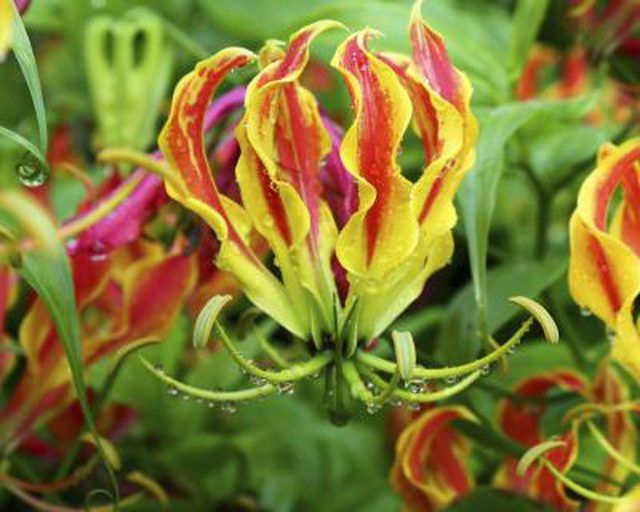Bulbs
Flower Basics
Flower Beds & Specialty Gardens
Flower Garden
Garden Furniture
Garden Gnomes
Garden Seeds
Garden Sheds
Garden Statues
Garden Tools & Supplies
Gardening Basics
Green & Organic
Groundcovers & Vines
Growing Annuals
Growing Basil
Growing Beans
Growing Berries
Growing Blueberries
Growing Cactus
Growing Corn
Growing Cotton
Growing Edibles
Growing Flowers
Growing Garlic
Growing Grapes
Growing Grass
Growing Herbs
Growing Jasmine
Growing Mint
Growing Mushrooms
Orchids
Growing Peanuts
Growing Perennials
Growing Plants
Growing Rosemary
Growing Roses
Growing Strawberries
Growing Sunflowers
Growing Thyme
Growing Tomatoes
Growing Tulips
Growing Vegetables
Herb Basics
Herb Garden
Indoor Growing
Landscaping Basics
Landscaping Patios
Landscaping Plants
Landscaping Shrubs
Landscaping Trees
Landscaping Walks & Pathways
Lawn Basics
Lawn Maintenance
Lawn Mowers
Lawn Ornaments
Lawn Planting
Lawn Tools
Outdoor Growing
Overall Landscape Planning
Pests, Weeds & Problems
Plant Basics
Rock Garden
Rose Garden
Shrubs
Soil
Specialty Gardens
Trees
Vegetable Garden
Yard Maintenance
How to Plant Gloriosa Rothschildiana Bulbs
How to Plant Gloriosa Rothschildiana Bulbs. A summer-blooming vine that takes a “long winter’s nap” during its off season, the “Rothschildiana” cultivar of gloriosa lily (Gloriosa superba “Rothschildiana”) attracts attention. Its yellow-edged red petals look as if they have been blown upward from their...

A summer-blooming vine that takes a "long winter’s nap" during its off season, the "Rothschildiana" cultivar of gloriosa lily (Gloriosa superba "Rothschildiana") attracts attention. Its yellow-edged red petals look as if they have been blown upward from their flowers’ centers. Gloriosa lilies, all parts of which are extremely poisonous, are hardy in U.S. Department of Agriculture plant hardiness zones 8 through 11 if heavily mulched in zone 8. They also may be raised as annuals or potted plants in colder climates, and their bulbs -- which are actually tubers -- stored indoors during winter.
Picture Gloriosa "Rothschildiana"
The upswept red and yellow petals of Gloriosa superba "Rothschildiana" are 2 to 3 inches long, like the redder petals of the superba species from which the plant derives. However, its 5- to 7-inch lance-shaped leaves are larger than the 4- to 5-inch leaves of superba. Those leaves metamorphose into tendrils at their tips in both varieties, and the plants' cylindrical white or tan tubers are sometimes forked. Growing to 6 feet in height, Gloriosa superba "Rothschildiana" will require a trellis or other support on which to climb. Some gardeners prefer to position it next to a shrub over which it can scramble.
Plant Gloriosa Tubers in Containers
If you wish to plant a gloriosa lily in a container, chose a 6 to 8-inch pot wide enough to comfortably accommodate a single tuber when it is laying flat. Fill that container with moist, acidic potting soil, and position a pot trellis or stake in it. Plant the tuber horizontally 2 to 4 inches beneath the soil’s surface in front of the trellis or stake. As each tuber has only one growing point, from which a bud may already have begun to sprout at planting time, be sure to handle it carefully to avoid breaking off that bud. In USDA zones lower than 8, you can pot up a tuber as early as mid-spring to give the gloriosa lily a head start on the season. Keep the sprouting plant on a bright windowsill indoors, watering it whenever the soil is dry 1 inch beneath the surface, until all danger of frost has passed. Then move the pot outdoors to a sheltered position where it receives at least 6 hours of sunlight early in the day, followed by shade during the hotter hours of the afternoon. Feed the plant once every two weeks with a high-potash liquid plant food such as liquid seaweed (0-0-1), mixing 1 tablespoon of the seaweed with each gallon of water.
Plant Gloriosa Tubers in the Garden
If you live in a USDA zone colder than 8, wait until after the last spring frost date for your area to plant gloriosa lily tubers in the ground next to a trellis or other support. In frost-free climates plant them from January through April, when the weather is still mild, as gloriosa lilies prefer daytime temperatures in the 70s Fahrenheit and nighttime temperatures in the 60s F. When choosing a site, opt for one with acidic soil where the plants will bask in at least six hours of morning sun and be shaded during the afternoon. Scatter 2 inches of compost over the ground and dig it in with 1 cup per 10 square feet of a high-potash organic fertilizer such as 4-1-5. Plant the gloriosa tubers horizontally 2 to 4 inches beneath the surface with the growing points 8 to 12 inches apart from each other. Water them well immediately after planting and continue to water them whenever the ground dries to an inch beneath the surface.
Preserve Gloriosa Tubers Over Winter
After the gloriosa lilies finish blooming and begin to die back, taper off their watering until the foliage is completely dry before digging the tubers in zones where the plants aren't hardy. Store the tubers in a container of sand or sawdust in a dry, cool location where temperatures remain around 62 to 64 degrees. If the tubers were growing in pots, you can leave them in the dry potting soil over the winter, though it is best to pot them up in fresh soil the following spring. They must have at least six to eight weeks of dormancy before being encouraged to sprout again by renewed watering, and can be stored for as long as eight months. Because the tubers are so toxic if ingested, with sap that can cause skin irritation as well, be sure to label them clearly and keep them out of reach of children and pets.